September 28 at 10:00
Designed by China Railway Bridge Institute
Built by China Railway Bridge Bureau
First in China
Multi-span long-joint road-rail dual-purpose steel truss bridge
——Pengbu Bridge opened to traffic

Why a new bridge?
This starts with the upgrading and transformation of the Shanghai-Hangzhou-Ningbo Expressway.
The Shanghai-Hangzhou-Ningbo Expressway is the first expressway built in Zhejiang. It is a "Golden Channel" connecting Zhejiang with Shanghai. There are 2/3 of Zhejiang's top 100 counties (districts) in Zhejiang, such as Xiaoshan, Haining and Yuyao. . Since its opening to traffic more than 20 years ago, it has made great contributions to the economic and social development of Zhejiang.
But today, due to urban expansion, the former suburbs have become the city center, and the Shanghai-Hangzhou-Ningbo Expressway has become an obstacle to the continuous development of the region. To this end, the Hangzhou section of the Shanghai-Hangzhou-Ningbo Expressway was renovated and upgraded.
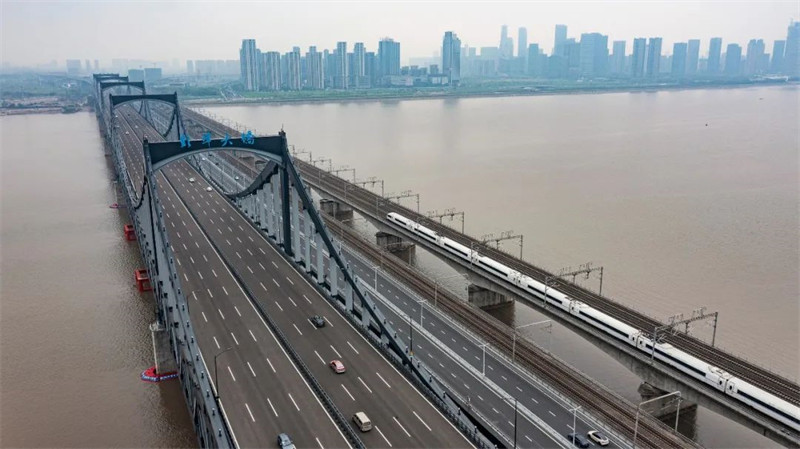
What does this bridge look like?
The elevated and ground roads of the reconstruction project of the Hangzhou urban section of the Shanghai-Hangzhou-Ningbo Expressway are officially named as Konggang Avenue (Elevated Road). The Pengbu Bridge is a control project for the project to cross the Qiantang River. The upper layer is a two-way eight-lane elevated expressway with a design speed of 80 kilometers per hour, and the lower layer is a double-track light rail. The total length of the project is 23.6 kilometers.< /strong>, the main bridge across the Qiantang River is 1350.8 meters long. This is a "road-rail joint construction" bridge, just like the Qiantang River Bridge (Qianjiang No. 1 Bridge), with the highway on the top and the subway track on the bottom.
The bridge shape extracts the elements of the Qiantang River "River Tide Waves", and integrates the appearance of the bridge with the Qiantang River, showing the spirit of the Qiantang River in the new era of "running to the competition and standing at the forefront of the tide" . This is the first time for Hangzhou Metro to "fly across the waves", and on both sides of the track layer, a slow travel system has been set up so that pedestrians and non-motor vehicles can cross the river.
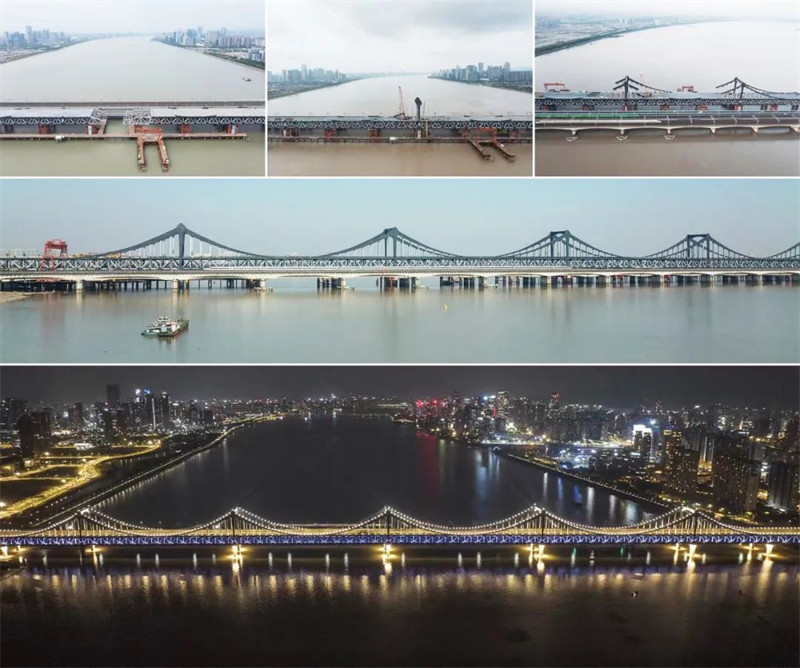
Three Difficulties—Measures
01 Difficulties
Shejiang, the project is located in the strong tidal section of the lower reaches of the Qiantang River. Affected by the flood discharge from the upstream nine holes, the maximum flood discharge flow since the construction of the bridge is as high as 15,000 cubic meters per second, and the flow rate is 2.93 meters per second. In addition, it is also affected by downstream tidal surges, such as astronomical spring tide, ghost king tide and storm surge.
Action
During the construction of the bridge foundation, the circular steel sheet pile cofferdam and the polygonal locking steel pipe pile cofferdam were used for the first time on the Qiantang River as the water-stop enclosure structure, which greatly shortened the construction period in water and reduced the safety risk of tidal water to the foundation construction.
02 Difficulties
There are many underwater obstacles. The project is located more than 20 meters downstream of the Second Qianjiang Bridge. There are many obstacles left during the construction of the Second Bridge in the late 1980s.
Action
During the construction of the new bridge, a cutter suction hydraulic dredger was introduced, which solved the problems of "old clay" and underwater obstacles in the construction of the cap.
03 Difficulties
The bridge structure is unique. The Xinpengbu Bridge is a multi-span long-connected public-rail dual-purpose catenary-shaped upper-stiffened steel truss bridge with a main span of 240 meters. It is rarely built in China in terms of single-span span or number of holes. Cases are technically difficult.
Action
After repeated comparison and selection, the main bridge steel truss girder was finally constructed by the "walker + slider" jacking method, which is also the first successful application in the jacking construction of large-scale steel truss girder. The total weight of the steel structure of the bridge is 62,000 tons, and the total jacking weight of the bridge is up to 43,000 tons. It is assembled and pushed in 8 rounds.
What changes will the bridge bring to the local area?
The completion and opening of the bridge to traffic will add an important transportation corridor to the main urban area of Hangzhou and Xiaoshan District. It will be transformed from the original toll road to a free toll road, and its function will be transformed from the original transit expressway to an urban viaduct serving the daily travel of citizens. It will also greatly upgrade and expand the traffic carrying capacity of the river crossing channel in the core area of the city, quickly connect the Shanghai-Kunming Expressway, Hangzhou Bay Ring Expressway and other major arteries around Hangzhou, greatly enhancing the traffic capacity of the connecting channel between Hangzhou urban area and the surrounding urban expressway network, in order to promote long-term development. Triangular integration, singing "A Tale of Hangzhou-Ningbo Twin Cities" and other major national strategies will play the role of the forerunner of transportation, build a one-corridor, multi-line comprehensive three-dimensional transportation corridor that is "leading in China and first in the province", further improve the city's energy level, and support Hangzhou in building a common An example of a city in a wealthy demonstration zone.
In the past three years, we bridge people——
More than a thousand days and nights
The builders of China Railway Bridge Bureau One Heart
Overcome one technical problem after another
Fighting non-stop Grasp the construction period and grab the node
Before the 20th Party Congress
This beautiful bridge with ingenuity opens smoothly
\ | /
★
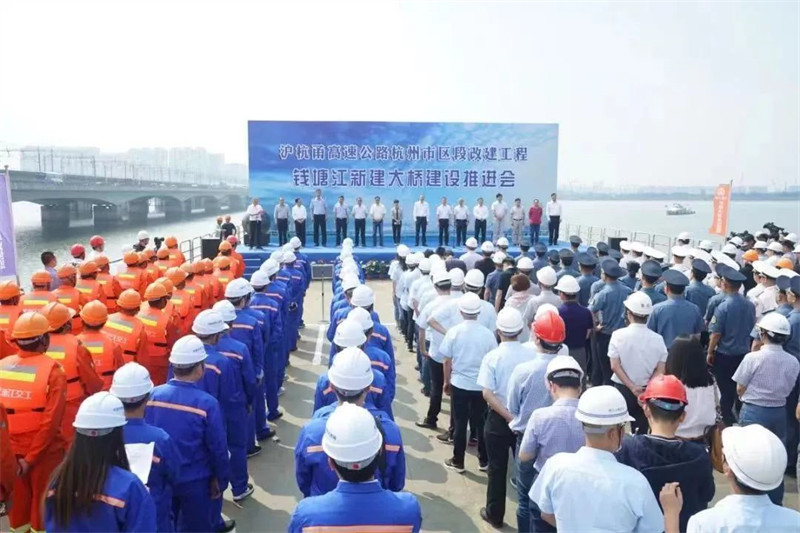
On May 31, 2019, the bridge construction started.
\ | /
★
On September 23, 2019, the first main pier pile was poured.
\ | /
★
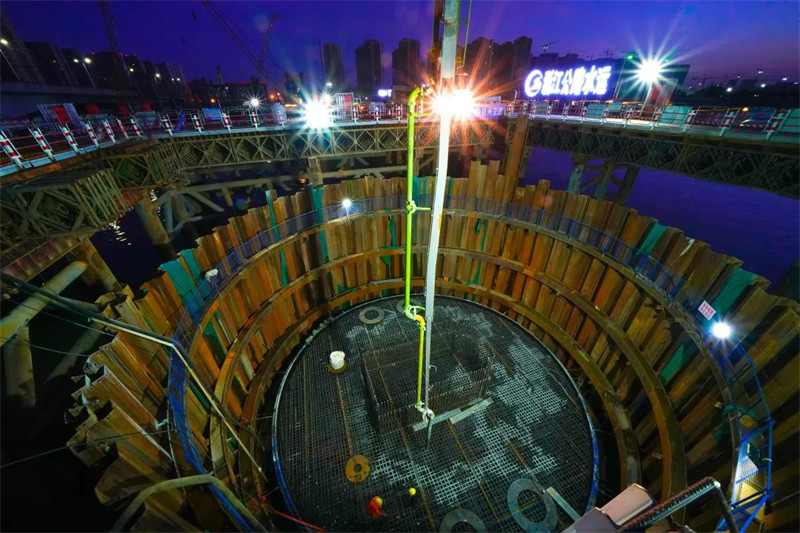
On January 10, 2020, the bored piles for the main pier of the bridge were completed.
\ | /
★
On March 25, 2020, the first circular cap of the bridge was poured.
\ | /
★

At the beginning of 2020, due to the impact of the epidemic, the construction period was delayed by two months. After the resumption of work, the project department worked hard and quickly, which effectively guaranteed the goal of opening the bridge to traffic on schedule.
\ | /
★
On July 14, 2020, the concrete pouring of the first submerged pier cover beam was completed.
\ | /
★
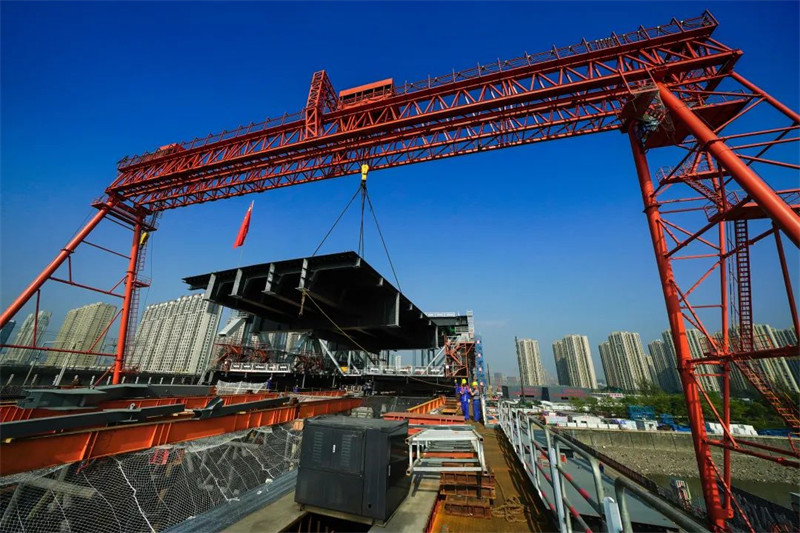
On July 31, 2020, the first hoisting steel truss beam was successfully hoisted and erected.
\ | /
★
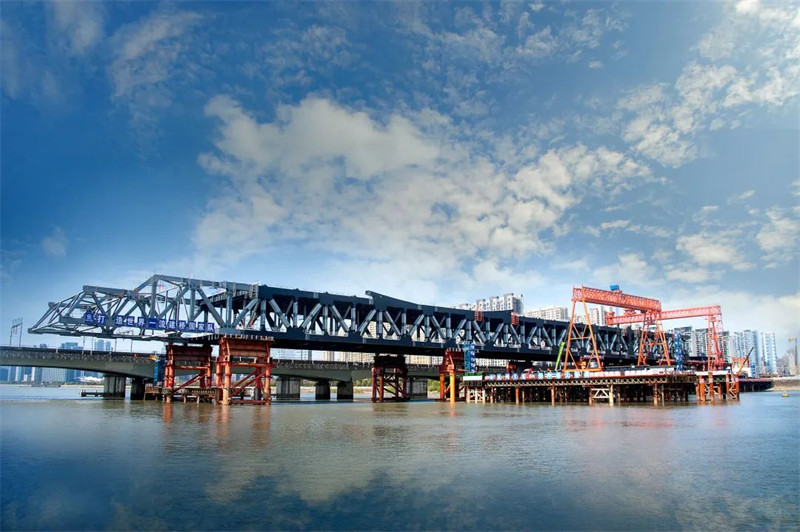
On October 24, 2020, the first round of steel truss girder jacking was completed.
\ | /
★

On June 25, 2021, the bridge closed.
\ | /
★
On June 17, 2022, the main bridge of the bridge officially entered the load test.
\ | /
★
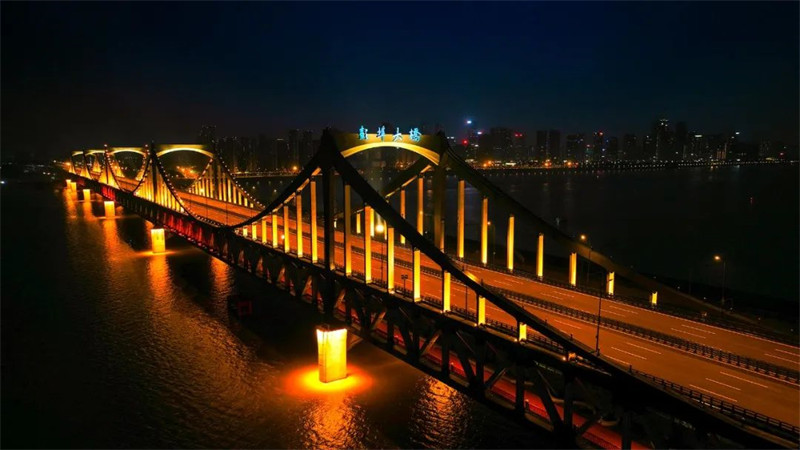
On August 13, 2022, the bridge landscape debugging was completed and entered the final sprint stage.
\ | /
★
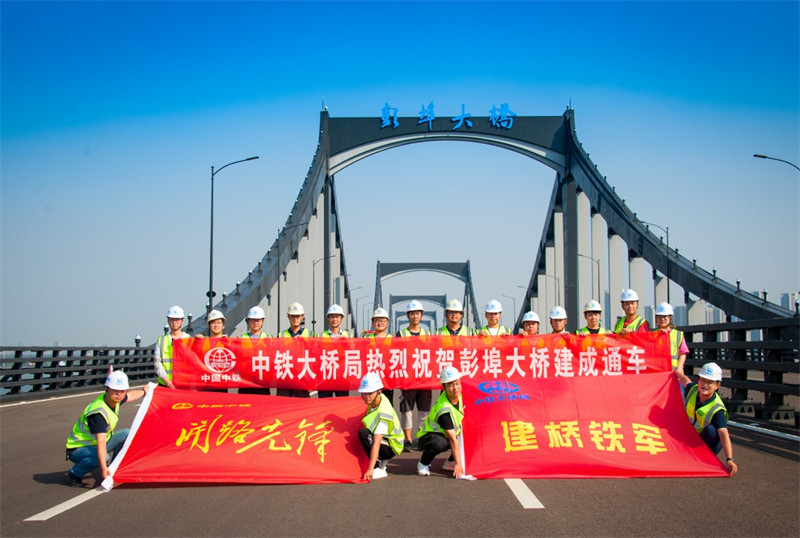
On September 28, 2022, the Pengbu Bridge was completed and opened to traffic.